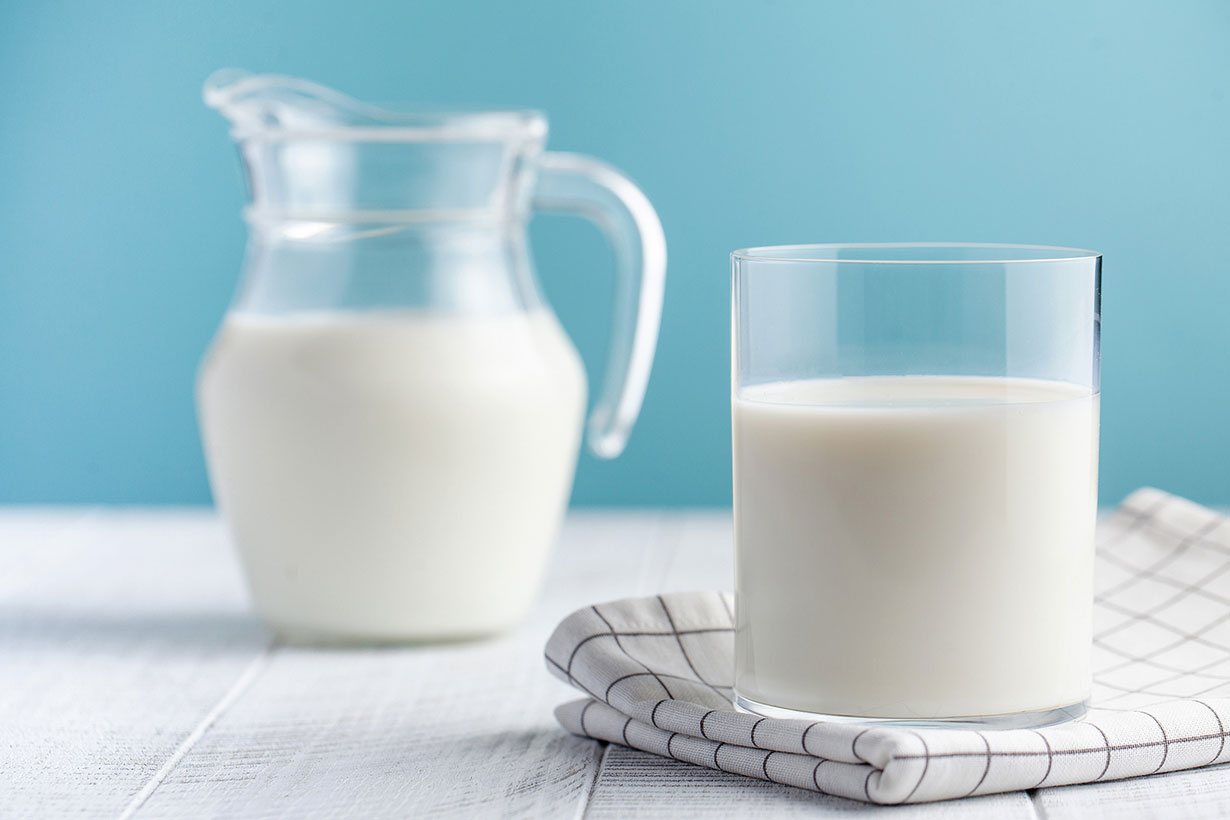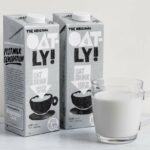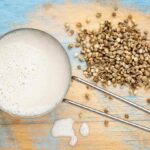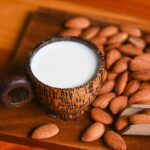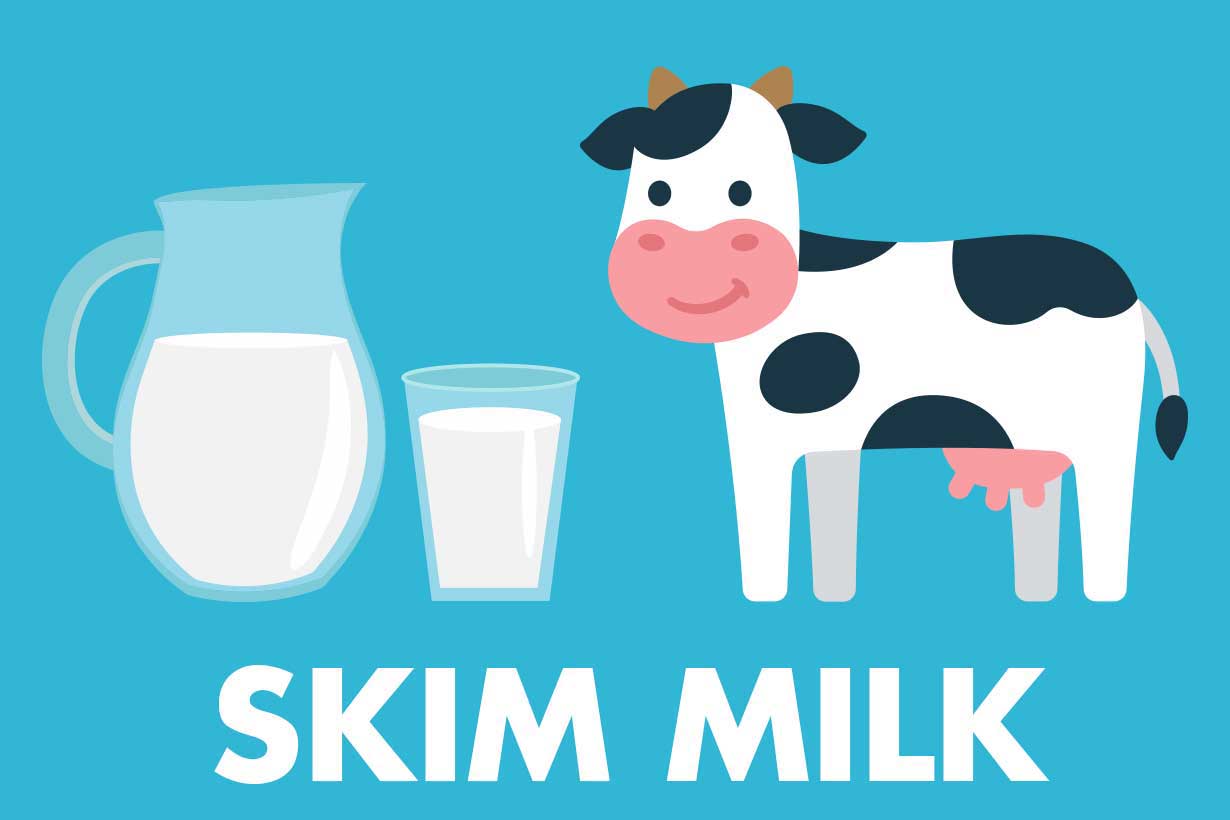Calcium is an essential mineral that plays a crucial role in keeping your bones healthy. One of the best dietary sources is dairy milk, with a typical glass providing 306 mg of the mineral (1).
However, what about the calcium content of milk alternatives such as soy milk or oat milk? Did you know it can vary significantly?
For those who enjoy plant-based milk alternatives, this article presents how much calcium they contain. Additionally, we look at how well we can absorb the calcium in milk alternatives compared to dairy milk.
Table of contents
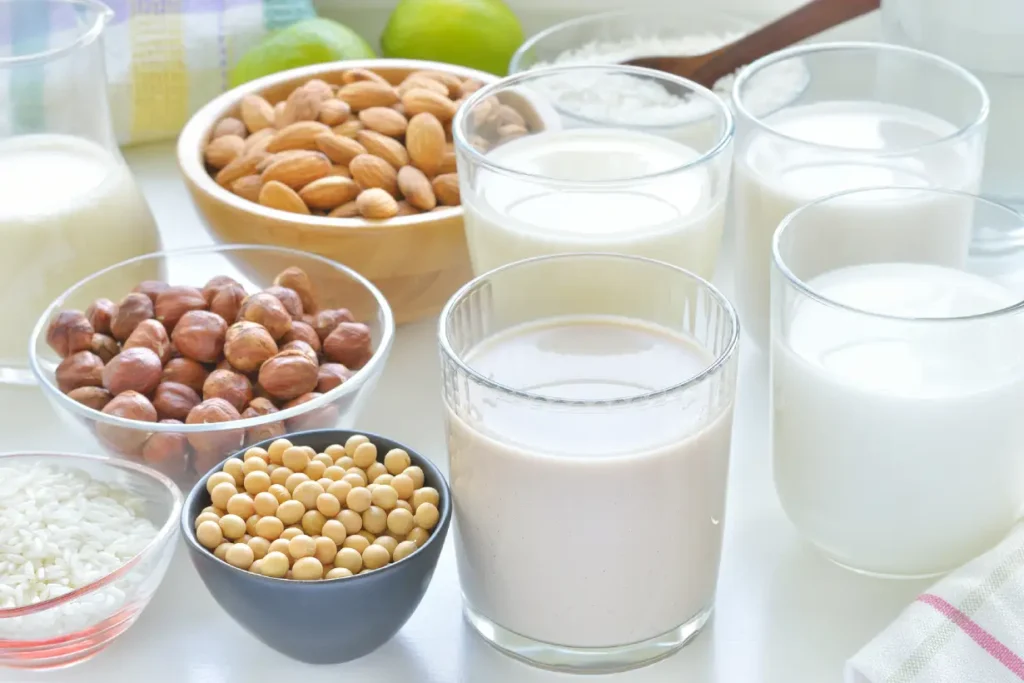
The Calcium Content of Milk Alternatives
In this section, you’ll find the precise amount of calcium each milk alternative provides per 100 ml and per typical cup serving (approximately 240 ml).
You can also see how much of the percent daily value (% DV) the amount of calcium equals, with the daily value for calcium set by the FDA at 1300 mg (2).
Lastly, information on whether the milk is fortified or unfortified will be provided.
Note: These data show the typical calcium content of milk alternatives. The precise amount will vary by brand, whether the milk has been fortified, and the quantity of calcium used in fortification processes.
Almond Milk
- Calcium per 100 ml: 158 mg (12% DV)
- Calcium per cup: 379 mg (29% DV)
- Fortified with calcium? Yes—fortified
Source: USDA Foundation Foods
Cashew Milk
- Calcium per 100 ml: 9 mg (1% DV)
- Calcium per cup: 20.4 mg (2% DV)
- Fortified with calcium? No—unfortified
Source: USDA Branded Foods (Nutiger Organics)
Note: The only USDA cashew milk entry is unfortified. But many commercial cashew milks are fortified and can provide a good source of calcium.
Coconut Milk (Beverage)
- Calcium per 100 ml: 188 mg (14% DV)
- Calcium per cup: 451 mg (35% DV)
- Fortified with calcium? Yes—fortified
Source: USDA SR Legacy
Hemp Milk
- Calcium per 100 ml: 108 mg (8% DV)
- Calcium per cup: 259 mg (20% DV)
- Fortified with calcium? Yes—fortified
Source: USDA Branded Foods (Pacific Foods)
Macadamia Milk
- Calcium per 100 ml: 72 mg (6% DV)
- Calcium per cup: 180 mg (14% DV)
- Fortified with calcium? Yes—fortified
Source: USDA Branded Foods (Suncoast Gold)
Oat Milk
- Calcium per 100 ml: 148 mg (11% DV)
- Calcium per cup: 355 mg (27% DV)
- Fortified with calcium? Yes—fortified
Source: USDA Foundation Foods
Pea Milk
- Calcium per 100 ml: 188 mg (14% DV)
- Calcium per cup: 451 mg (35% DV)
- Fortified with calcium? Yes—fortified
Source: USDA Branded Foods (Ripple)
Rice Milk
- Calcium per 100 ml: 118 mg (9% DV)
- Calcium per cup: 283 mg (22% DV)
- Fortified with calcium? Yes—fortified
Source: USDA SR Legacy
Soy Milk
- Calcium per 100 ml: 155 mg (12% DV)
- Calcium per cup: 372 mg (29% DV)
- Fortified with calcium? Yes—fortified
Source: USDA Foundation Foods
Choosing a Good Milk Alternative For Calcium
If you’re choosing a plant-based milk as an alternative to dairy and want a similar calcium provision, opt for a calcium-fortified product.
Milk alternatives with a high calcium content only exist because they have been fortified with calcium.
Why Fortified Milk Alternatives Are Important for Calcium
You may have noticed the amount of calcium in plant-based milk alternatives can vary significantly.
If getting a good source of calcium is important to you, the key thing to look for is whether the product has been fortified with calcium.
This is because plant-based milks are not naturally high in calcium. Therefore, any fortified variety of plant-based milk will contain more calcium than an unfortified version.
The best way to check is by inspecting the nutrition label. Specifically, look for calcium in the ingredients or the nutrition facts panel.
There Is No Standardized Calcium Fortification For Milk Alternatives
Another important point to note is that in the United States and many other countries, there is no standardized amount of calcium required for plant-based milks.
Fortification is a voluntary process—manufacturers don’t have to add calcium.
For anyone wanting their milk alternative to match the calcium provision of dairy, fortification is essential.
According to USDA data, whole milk provides 306 mg of calcium per cup, which is approximately 127 mg per 100 ml (1). Look for a similar calcium level if you want your plant milk to match dairy.
Does the Calcium in Milk Alternatives Have the Same Bioavailability As Dairy?
Now that we know how much calcium is in common milk alternatives, let’s examine how it matches up to calcium in dairy.
Is it the exact same type of calcium? Or is the calcium with which milk alternatives are fortified slightly different?
Firstly, there are two main types of calcium which plant-based milks are fortified with:
- Calcium carbonate
- Tricalcium phosphate
If you check the ingredient profile of a calcium-fortified milk alternative, you’ll likely see one of these.
Calcium Bioavailability: Dairy Calcium vs Calcium Carbonate vs Tricalcium Phosphate
Let’s now examine how dairy calcium compares to calcium carbonate and tricalcium phosphate in terms of bioavailability. In other words, the amount we can effectively absorb and use.
The table below shows the average bioavailability rate of all three types:
| Calcium Type | Approximate Bioavailability | References |
|---|---|---|
| Dairy calcium | 30–35% | 3, 4, 5 |
| Calcium carbonate | 26–32% | 6, 7, 8 |
| Tricalcium phosphate | 25–30% | 9, 10, 11 |
As we can see in the table, we absorb approximately 30-35% of the calcium from dairy milk. Although absorption from calcium carbonate and tricalcium phosphate is slightly lower according to studies, all three are relatively similar.
Based on trials in which calcium carbonate slightly outperformed tricalcium phosphate, plant-based milks fortified with calcium carbonate may have a minor edge for absorption rates—but the difference is quite small.
The take-home point: the total amount of calcium in a milk alternative matters more than small bioavailbility differences, which are still fairly close to dairy milk.
Other Nutritional Considerations About Milk Alternatives
As well as calcium, there are other nutritional differences between dairy milk and plant-based alternatives to consider.
Protein
Not all plant-based milks are high in protein. While soy milk is a good source, options such as coconut milk and oat milk are not.
Vitamin B12
Calcium isn’t the only micronutrient that milk alternatives can be fortified with.
Because vitamin B12 doesn’t naturally occur in plant-based milks, it’s only present if the product has been fortified.
Vitamin D
Vitamin D is another key nutrient that plant-based milks lack naturally. If vitamin D is important to you, check if the milk has been fortified with it.
Additionally, vitamin D plays a key role in calcium absorption because it improves the transport of calcium through the small intestine into the blood (12, 13).
While blood levels of vitamin D are what matter most, getting vitamin D from a milk alternative may help raise blood levels over time.
How Milk Alternatives Compare for Calcium: What to Remember
Let’s now summarize the key points from this article:
- USDA data shows that many plant-based milk alternatives can provide calcium levels similar to dairy.
- Only calcium-fortified milk alternatives are good calcium sources; unfortified versions are not.
- While dairy calcium may have slightly better absorption rates, the differences in bioavailability are small.
- Fortified milk alternatives can match dairy’s calcium content, but they may lack other beneficial nutrients found in dairy milk.
- To ensure you’re getting enough calcium, always check the label to confirm calcium fortification.
To learn more about the nutritional properties of different types of milk, please see here: 24 Types of Milk and Their Nutritional Values


